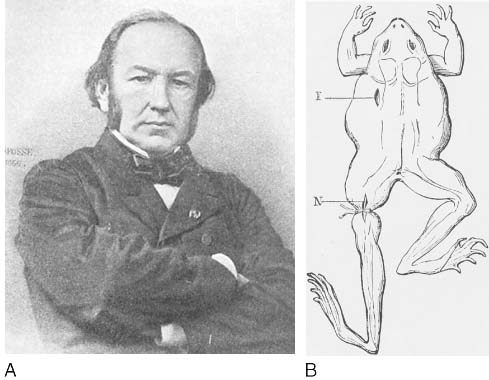 |
 |
Figure 1-13
A, Claude Bernard (1813–1878)
was one of the greatest physiologists of all time and made several contributions
to the anesthesia literature. Bernard was born in Saint Julien, France, and was
educated in Paris. After his medical training, he became an assistant to François
Magendie, the leading physiologist of that era. He never practiced medicine, but
his research contributions pervade every field of modern medicine. In 1855, he succeeded
Magendie as Professor of Physiology at the College de France. A special Chair of
General Physiology was created for him at the Sorbonne. B,
Experiment by Claude Bernard, illustrating the site of action of curare at the junction
of the nerve and muscle. A ligature prevented injected curare (I) from reaching
the muscle of the frog's hind limb. After curare injection systemically, Bernard
observed that the limb contracted in response to a neural stimulus (N) applied above
the ligature. The opposite limb would contract only to direct electric stimulation
of the muscle but not to a neural stimulus. He showed that the nerve and muscle
were unaffected but that the connection between the nerve and the muscle was blocked.
[329]
(Courtesy of the National Library
of Medicine, Bethesda, MD.)

 |
